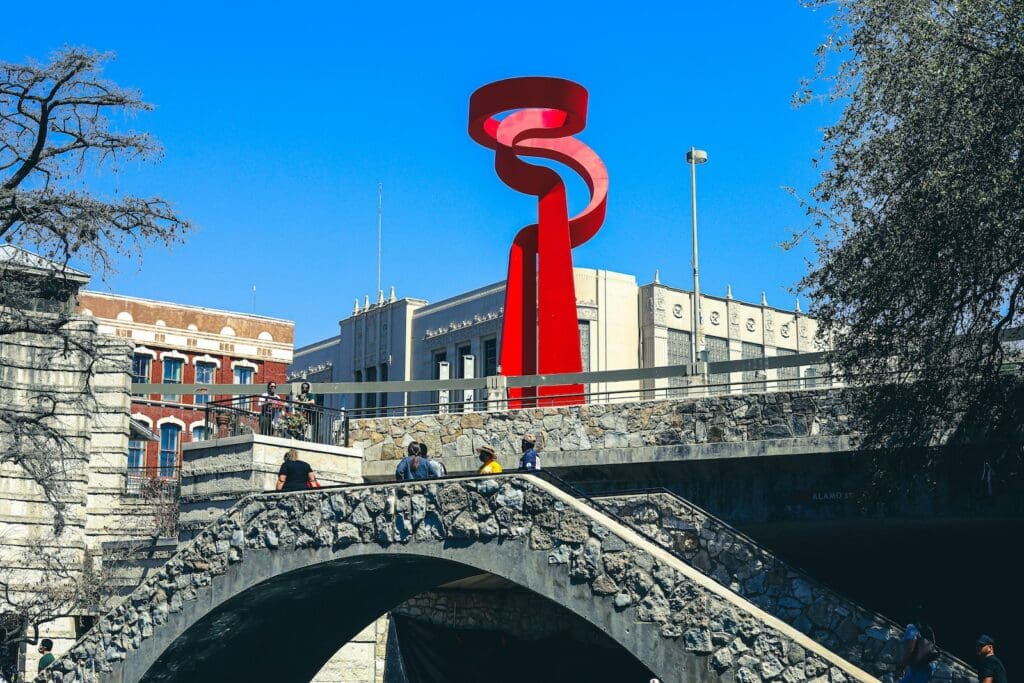
The Riverwalk in San Antonio, also known as Paseo del Rio, is a verdant urban sanctuary that winds its way below street level and offers a glimpse into a world where history and modernity blend seamlessly. This 15-mile oasis attracts millions of visitors each year, drawn not only to its serene waters and lush landscapes but also to the architectural marvels that line its banks. The Riverwalk is an open-air museum of sorts, showcasing a diverse array of building styles from rustic Spanish colonial to sleek contemporary designs.
As one ambles along the winding pathways of the Riverwalk, the eye is treated to an eclectic mix of structures, each telling its own story of the city’s evolution. Historic bridges arch gracefully over the water, connecting parts of the city in a literal and figurative sense, while meticulously restored buildings give patrons a sense of San Antonio’s storied past. The fusion of Spanish-influenced designs with modern flair creates a visual dialogue between the city’s deep-rooted history and its dynamic present.
The Riverwalk is not only a feast for the eyes but also a testament to San Antonio’s commitment to preserving its heritage while fostering growth and innovation. The clever use of space in this urban environment, including riverside dining, shopping precincts, and open plazas, illustrates the thoughtful planning that has gone into making the Riverwalk a destination that captures the imagination and hearts of all who visit.
History of the Riverwalk
The San Antonio River Walk is an emblem of the city’s cultural heritage, tracing its origins to the early 20th century, with successive transformations forging the landscape visitors admire today.
Early Development
Development of the River Walk began as a flood control measure. After a catastrophic flood in 1921, architect Robert H. H. Hugman proposed the idea of a riverside development to beautify the area and prevent future disasters. Work to transform the banks of the San Antonio River into a commercial and entertainment hub commenced in 1939, influenced by the quaint sidewalks, charming stone bridges, and lush landscaping seen today.
Major Renovations
Over the years, significant renovations have expanded the River Walk beyond its initial scope. Key developments include:
- 1968 World’s Fair: In preparation for the HemisFair ’68, the River Walk underwent major expansions.
- 1980s – 1990s:
- 1988: The Williams Brother’s construction company extended the walkways, doubling the length of the River Walk.
- 1991: The city further extended the River Walk to reach the San Antonio Museum of Art.
- 21st Century Projects:
- 2009: An ambitious $358.3 million project known as the Museum Reach extended the River Walk another 4 miles north.
- 2013: The Mission Reach project expanded the River Walk an additional 8 miles, enhancing access to the city’s Spanish colonial missions.
Signature Architecture
San Antonio’s Riverwalk is adorned with stylistically diverse and historic architecture. It showcases distinct elements that reflect the city’s rich cultural heritage.
Arneson River Theatre
The Arneson River Theatre is easily recognized by its unique stage, gracefully sitting on one side of the river, with the audience seated on the opposite bank. It was designed by architect Robert Hugman and is noted for its remarkable acoustics and open-air venue layout.
Navarro Street Bridge
Originally constructed in 1890, the Navarro Street Bridge blends functionality with grace. The bridge features distinct Italianate balusters and is a pedestrian favorite, providing scenic views of the Riverwalk to both residents and tourists.
Historic Hotels
San Antonio’s Riverwalk is not only celebrated for its bridges and theatres but also for its historic hotels. Prominent examples include:
- The Menger Hotel: Opened in 1859, this hotel boasts a striking Victorian structure and storied history.
- The Fairmount Hotel: Recognized as a Treasure of Texas, it was built in 1906 and offers Beaux-Arts architecture.
- Hotel Havana: Constructed in 1914, reflecting Mediterranean Revival style, the hotel adds to the area’s architectural diversity.
Cultural Significance
The San Antonio Riverwalk is not merely a tourist destination but a vibrant hub that celebrates the city’s rich culture through various festivals and a splendid array of public art.
Festivals and Events
San Antonio’s Riverwalk is the epicenter for numerous cultural festivals and events that intertwine with the city’s traditions. Two standout celebrations include:
- Fiesta San Antonio: A ten-day event filled with music, food, and parades that honors the heroes of the Alamo and the Battle of San Jacinto.
- Ford Holiday River Parade: An annual magical evening where floats lit with thousands of lights cruise along the river, marking the kickoff to the holiday season.
Public Art Installations
Throughout the Riverwalk, visitors are greeted by public art installations that showcase local and international talent. Notable installations include:
- The Grotto: Designed by Carlos Cortés, this whimsical concrete structure resembles a cave with water features and intricate sculptures.
- F.I.S.H. by Donald Lipski: A school of 25 sunfish sculptures suspended overhead, illuminated at night to create a striking visual above the river.






